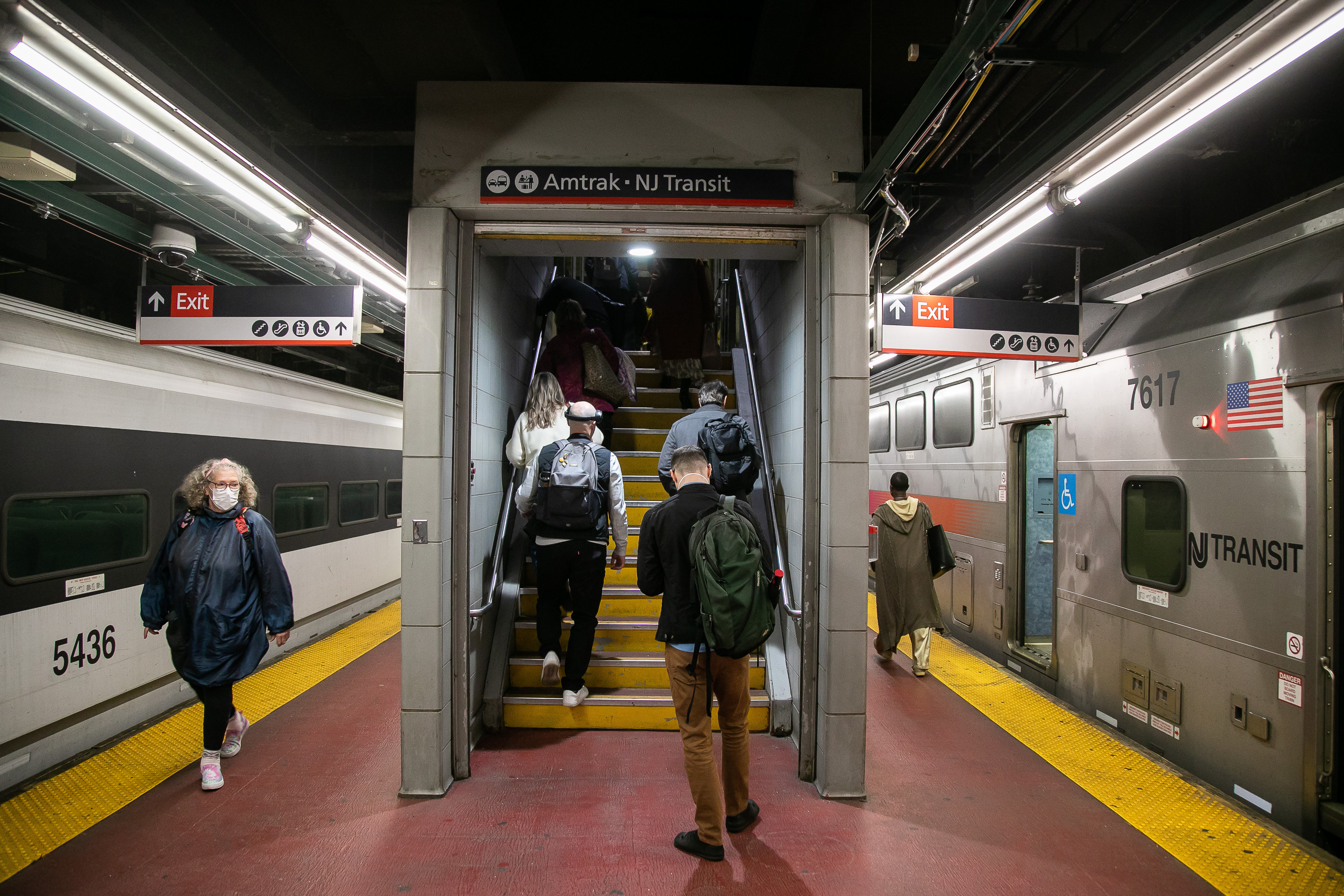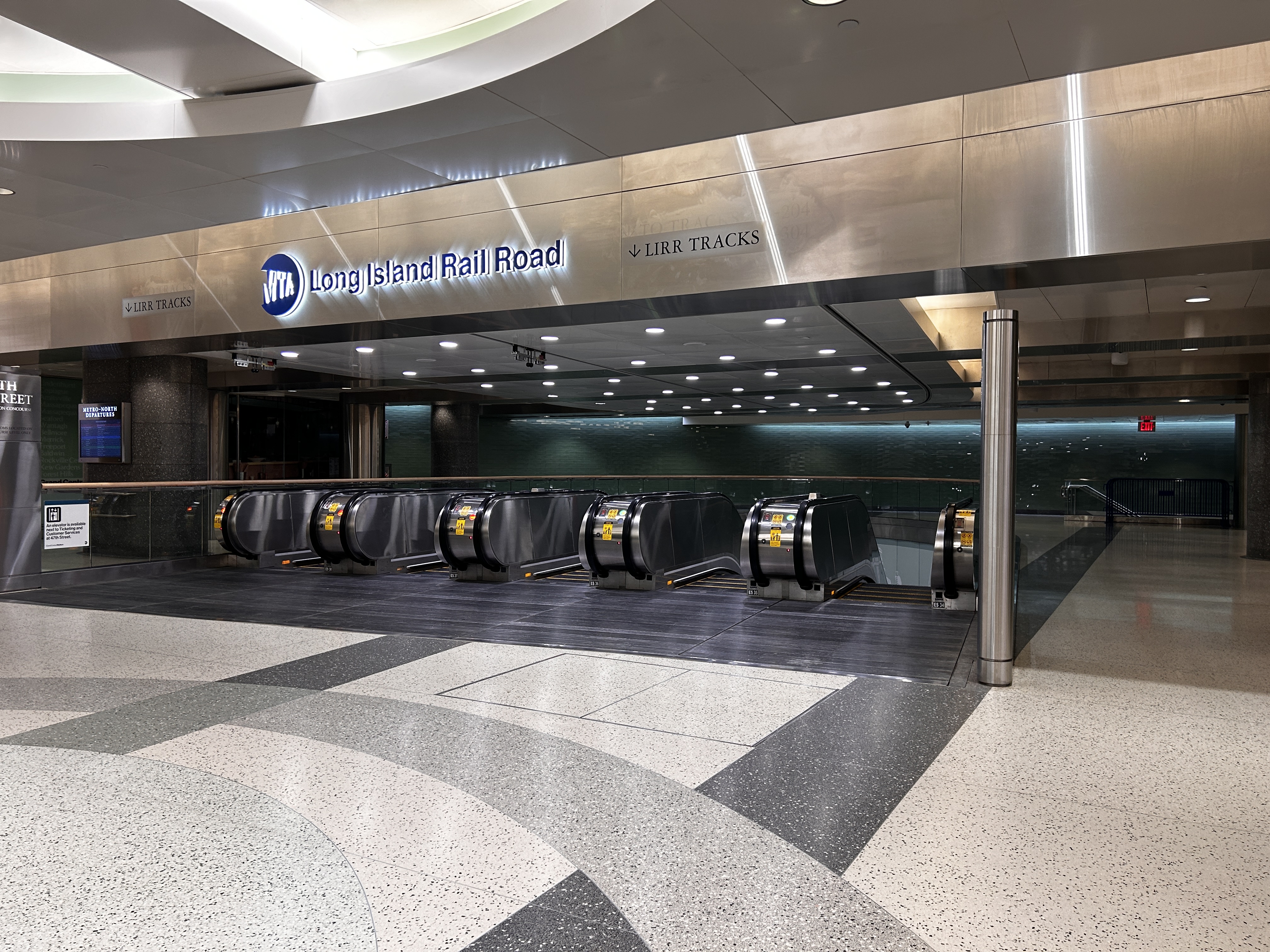Penn Station's $7B Transformation: Trump Takes Charge!
Trump Administration Seizes Control: Penn Station's $7B Makeover
Introduction: A New Conductor for Penn Station's Orchestra
Imagine Penn Station. The heart of New York City's transit system. A bustling, vibrant hub… or at least, it should be. For years, it's been more like a cramped, dimly lit obstacle course, a far cry from the grand entrance the city deserves. Now, picture this: the Trump administration, stepping in like a new conductor taking the baton. They’re taking over the $7 billion reconstruction project, a move that’s certainly stirring the pot.
Why the sudden change of plans? What does it mean for the future of Penn Station and the millions who rely on it every year? This article dives deep into the details, exploring the motivations behind this bold move, the potential impacts, and what it all means for the future of New York City’s transportation landscape. Get ready for a ride!
A Long-Awaited Transformation: The Dream for a Modern Penn Station
For decades, the idea of a revamped Penn Station has been floating around like a persistent rumor. State and city officials have grappled with proposals, designs, and funding challenges, all in the pursuit of transforming this critical but dilapidated transit hub. Why has it been such a struggle?
The Current State: A Grim Reality
Let's face it: Penn Station isn't exactly a tourist destination. It's plagued by aging infrastructure, overcrowded platforms, and a general atmosphere of gloom. Commuters are crammed into tight spaces, navigating a maze of corridors just to catch their train. It's a far cry from the grand transit hubs found in other major cities around the world.
Previous Plans: A Rollercoaster of Ideas
Various plans have been proposed over the years, each with its own set of supporters and critics. Some focused on expanding the station's footprint, while others prioritized upgrading the existing infrastructure. But time and time again, these plans have stalled due to funding issues, political disagreements, and logistical hurdles.
Enter the Trump Administration: A Game Changer?
Just when it seemed like the Penn Station reconstruction project was stuck in neutral, the Trump administration stepped in, announcing its decision to take control. This move effectively sidelined the Metropolitan Transportation Authority (MTA), the agency that had been leading the charge for years.
Sean Duffy's Vision: A World-Class Transit Hub
According to Department of Transportation Secretary Sean Duffy, the goal is to deliver a "world-class Penn Station." He believes that by working directly with Amtrak, the federally chartered railroad company that owns the station, the administration can streamline the project and achieve a better outcome. But is it really that simple?
The MTA's Demotion: A Controversial Decision
Removing the MTA from its leadership role has sparked controversy. Some see it as a necessary step to overcome bureaucratic gridlock, while others view it as a power grab that undermines local control. The MTA has been working on this project for years, so the switch-up raises questions about continuity and expertise.
Amtrak's Role: A Key Partnership
Amtrak's role in the reconstruction project is crucial. As the owner of Penn Station, the company has a vested interest in its success. By partnering directly with the Department of Transportation, Amtrak could potentially unlock new funding sources and accelerate the project's timeline.
Federal Funding: A Potential Boost
With the federal government taking the lead, the project could benefit from increased access to federal funding. This could help overcome the financial obstacles that have plagued previous efforts and pave the way for a more ambitious and comprehensive renovation.
Navigating the Bureaucracy: A Challenge Ahead
However, navigating the complexities of federal bureaucracy is no easy feat. The project will still need to comply with numerous regulations and undergo extensive environmental reviews. Streamlining the process will be essential to avoid further delays and cost overruns.
The $7 Billion Price Tag: Is It Enough?
Seven billion dollars is a significant sum of money, but is it enough to fully transform Penn Station into the world-class transit hub it deserves to be? Considering the scope of the project and the challenges involved, some experts believe that additional funding may be needed.
Scope of the Reconstruction: A Multi-faceted Project
The reconstruction project encompasses a wide range of improvements, including upgrading the tracks and platforms, expanding the concourses, improving accessibility, and enhancing the overall aesthetics of the station. It's a massive undertaking that requires careful planning and execution.
Potential Cost Overruns: A Recurring Concern
Large-scale infrastructure projects are often plagued by cost overruns. Unexpected challenges, delays, and changes in design can all contribute to budget increases. It's crucial to have a robust contingency plan in place to mitigate these risks.
Impact on Commuters: A Temporary Inconvenience for a Long-Term Gain?
Reconstructing Penn Station will inevitably disrupt the daily lives of millions of commuters. Construction work could lead to delays, service disruptions, and temporary station closures. But are these temporary inconveniences worth it for the promise of a better future?
Minimizing Disruptions: A Top Priority
Minimizing the impact on commuters should be a top priority throughout the reconstruction process. This will require careful planning, effective communication, and a willingness to adapt to changing circumstances. Transparency and clear communication with the public are essential.
Long-Term Benefits: A More Efficient and Pleasant Experience
In the long run, a modernized Penn Station will offer a more efficient, comfortable, and enjoyable experience for commuters. Improved infrastructure, expanded capacity, and enhanced amenities will make traveling through the station a much more pleasant experience.
The Political Fallout: A Divisive Issue
The Trump administration's decision to take control of the Penn Station reconstruction project has sparked political debate. Some see it as a bold move to get things done, while others view it as an overreach of federal power. The political implications of this decision could be far-reaching.
State vs. Federal Control: A Battle for Influence
The dispute over who should control the Penn Station project highlights the ongoing tension between state and federal authorities. Each level of government has its own priorities and perspectives, and finding common ground can be a challenge.
Potential for Collaboration: A Path Forward?
Despite the initial controversy, there is still potential for collaboration between state and federal authorities. By working together, they can leverage their respective strengths and expertise to ensure the success of the project. Open communication and a willingness to compromise are essential.
The Future of Penn Station: A Glimpse into Tomorrow
What will Penn Station look like when the reconstruction is complete? Will it truly be a world-class transit hub that New York City can be proud of? The answer depends on a variety of factors, including funding, planning, and execution.
A Modern Transportation Hub: More Than Just a Train Station
The vision for a modernized Penn Station extends beyond simply upgrading the tracks and platforms. It includes creating a vibrant, multi-use space that integrates with the surrounding neighborhood. Think of it as a destination in itself, with shops, restaurants, and public spaces.
A Symbol of Progress: A New Era for New York City
A successful Penn Station reconstruction project would be a symbol of progress and revitalization for New York City. It would demonstrate the city's commitment to investing in its infrastructure and improving the lives of its residents. It could also serve as a model for other cities looking to modernize their transit systems.
Conclusion: A Transit Transformation in Progress
The Trump administration's takeover of the Penn Station reconstruction project marks a significant turning point in the long-awaited effort to modernize this critical transit hub. While the move has sparked controversy and raised questions about local control, it also presents an opportunity to accelerate the project and unlock new funding sources. Only time will tell whether this change in leadership will ultimately lead to the world-class Penn Station that New York City deserves. But one thing is certain: the future of Penn Station is now in the hands of a new conductor.
Frequently Asked Questions
- Why did the Trump administration take over the Penn Station reconstruction project?
The administration believed it could deliver a "world-class" Penn Station more efficiently by working directly with Amtrak, the station's owner, and streamlining the process.
- What role will the MTA play in the project now?
The MTA's role as the lead agency for the reconstruction has been withdrawn, but they may still be involved in some capacity, although the exact details remain to be seen.
- How will the reconstruction impact commuters?
Commuters can expect potential delays, service disruptions, and temporary station closures during the construction period. However, efforts will be made to minimize these disruptions.
- How is the project being funded?
The $7 billion project will likely be funded through a combination of federal funding, Amtrak contributions, and potentially state and local sources. The exact funding breakdown is still being determined.
- What are the long-term benefits of the reconstruction?
The long-term benefits include a more efficient, comfortable, and enjoyable travel experience for commuters, improved infrastructure, increased capacity, and enhanced amenities at Penn Station.


